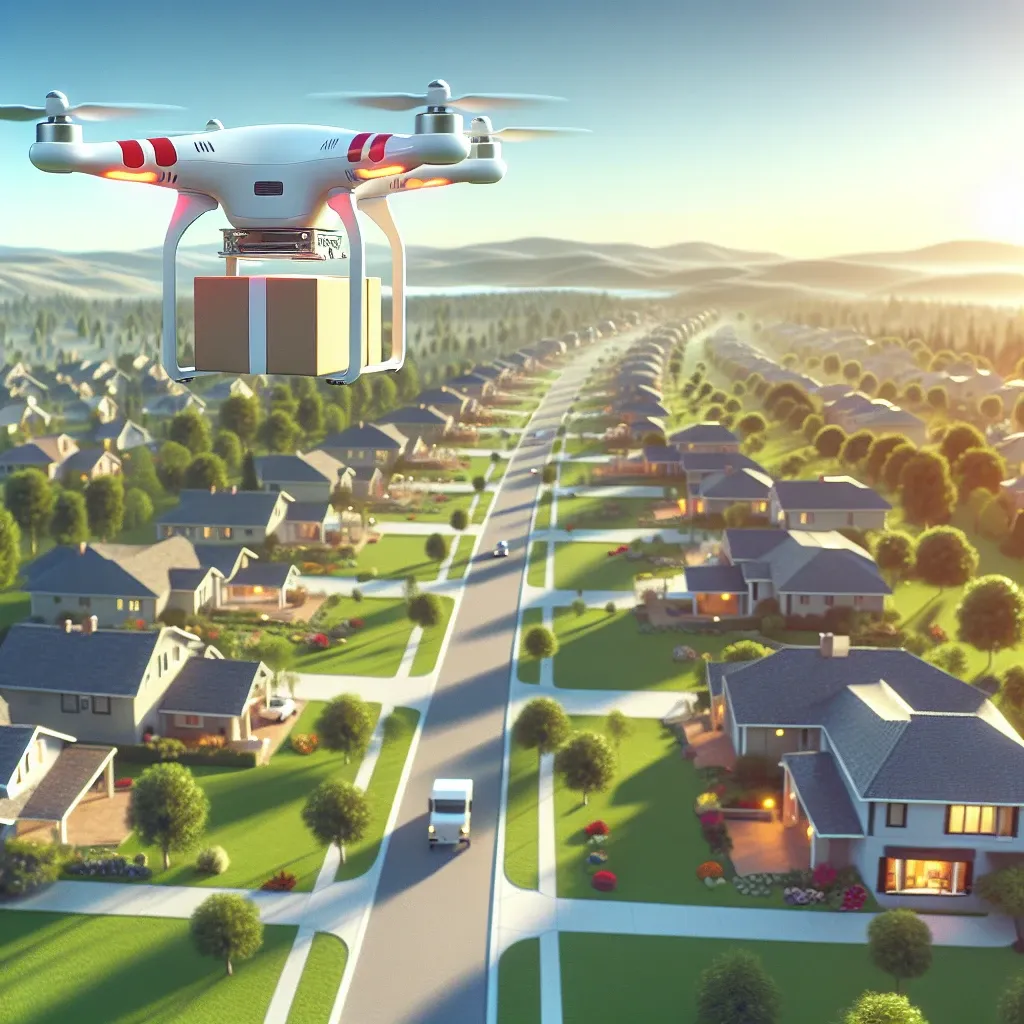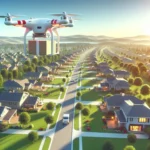Introduction
In an exciting development for the food delivery industry, DoorDash is piloting drone-assisted delivery in select suburbs across the U.S. This innovative approach aims to improve delivery times and enhance customer satisfaction while navigating the complexities of logistics. As we delve into this article, we will examine the historical context, the benefits and challenges of implementing drone technology, potential future implications, and much more.
The Rise of Drone Delivery
The concept of drone delivery isn’t new. Companies have been exploring this technology for several years. In 2013, Amazon unveiled its vision for drone delivery, sparking interest across various sectors. Fast forward to today, and we are witnessing practical implementations by companies like DoorDash. By leveraging drone technology, DoorDash aims to deliver food quickly and efficiently, especially in suburban areas where traffic congestion can impact delivery times.
Historical Context
Drone technology has evolved significantly since its inception. Initially, drones were primarily used for military purposes. However, the rise of commercial applications began in the early 2000s. In 2016, the FAA began to establish regulations for commercial drone operations, paving the way for companies to explore delivery options. With advancements in battery life, navigation systems, and payload capacity, the feasibility of drone-assisted delivery has become increasingly realistic.
The DoorDash Initiative
In 2023, DoorDash announced its pilot program for drone-assisted delivery in suburban regions. This initiative is part of the company’s broader strategy to enhance its logistics capabilities. The pilot program aims to assess the efficiency, reliability, and customer acceptance of drone deliveries in everyday scenarios.
How It Works
- Order Placement: Customers place their orders through the DoorDash app as usual.
- Drone Dispatch: Once the order is ready, a drone is dispatched from a designated location.
- Delivery: The drone navigates to the customer’s location using GPS and automated flight paths.
- Food Drop: Upon arrival, the drone safely delivers the food to a predetermined drop-off point.
Benefits of Drone Delivery
1. Speed and Efficiency
One of the most significant advantages of drone delivery is speed. Drones can bypass traffic and reach their destinations more quickly than traditional delivery methods. This is particularly beneficial in suburban areas where traffic congestion can lead to delays.
2. Cost Savings
Drone delivery could potentially reduce operational costs for DoorDash. By automating the delivery process, the company can minimize labor expenses and optimize resource allocation.
3. Environmental Impact
With growing concerns about carbon emissions, drone deliveries present a more environmentally friendly option compared to vehicles. Drones produce less pollution and can operate on electric power, contributing to sustainability efforts.
4. Customer Convenience
For customers, drone delivery offers a new level of convenience. Imagine the ease of receiving your favorite meal at your doorstep without waiting for a delivery driver. This can enhance the overall customer experience and increase customer loyalty.
Challenges to Overcome
1. Regulatory Hurdles
Despite the potential benefits, drone delivery faces significant regulatory challenges. The FAA has strict guidelines governing drone operations, and companies must navigate these regulations to ensure compliance.
2. Safety Concerns
Ensuring the safety of drone operations is paramount. There are concerns regarding drone collisions, privacy issues, and the potential impact on wildlife. Addressing these safety concerns will be critical for the success of drone delivery.
3. Limited Payload Capacity
Drones have limitations in terms of payload capacity. Currently, most drones can only carry a limited weight, which may restrict the types of food orders that can be delivered. As technology advances, we may see improvements in payload capacity.
Future Predictions
The future of drone delivery looks promising as technology continues to evolve. Industry experts predict that, within the next decade, drone deliveries could become a common sight in urban and suburban areas. As more companies explore this technology, we may witness a revolution in the logistics landscape.
Potential Expansion
If DoorDash’s pilot program proves successful, we can expect to see an expansion of drone delivery services to other regions. This could lead to a significant shift in consumer behavior, with more customers opting for drone delivery for its speed and convenience.
Integration with Other Technologies
As smart homes become more prevalent, integrating drone delivery with smart home technology could further enhance the customer experience. For instance, drones could communicate with smart door locks to ensure secure delivery.
Cultural Relevance
The rise of drone delivery resonates with a culture that increasingly values convenience and efficiency. Consumers today seek quick solutions to everyday challenges, and drone delivery is well-positioned to meet these demands. Moreover, the fascination with drones and technology aligns with contemporary trends, making it an exciting topic for discussion.
Statistics and Expert Insights
According to recent studies, 54% of consumers expressed interest in using drone delivery services if they were available. Industry experts believe that as companies like DoorDash continue to refine their drone delivery systems, this interest will only grow. Quotes from logistics analysts highlight the transformative potential of drone delivery, stating, “Drone technology could redefine the last mile of delivery logistics, making it faster, cheaper, and more efficient.”
Conclusion
DoorDash’s pilot program for drone-assisted delivery in U.S. suburbs marks a significant step towards integrating drone technology into the food delivery landscape. While challenges remain, the potential benefits of speed, efficiency, and customer satisfaction are compelling. As we look to the future, the evolution of drone delivery could reshape how we think about logistics and convenience in our daily lives.






Leave a Reply